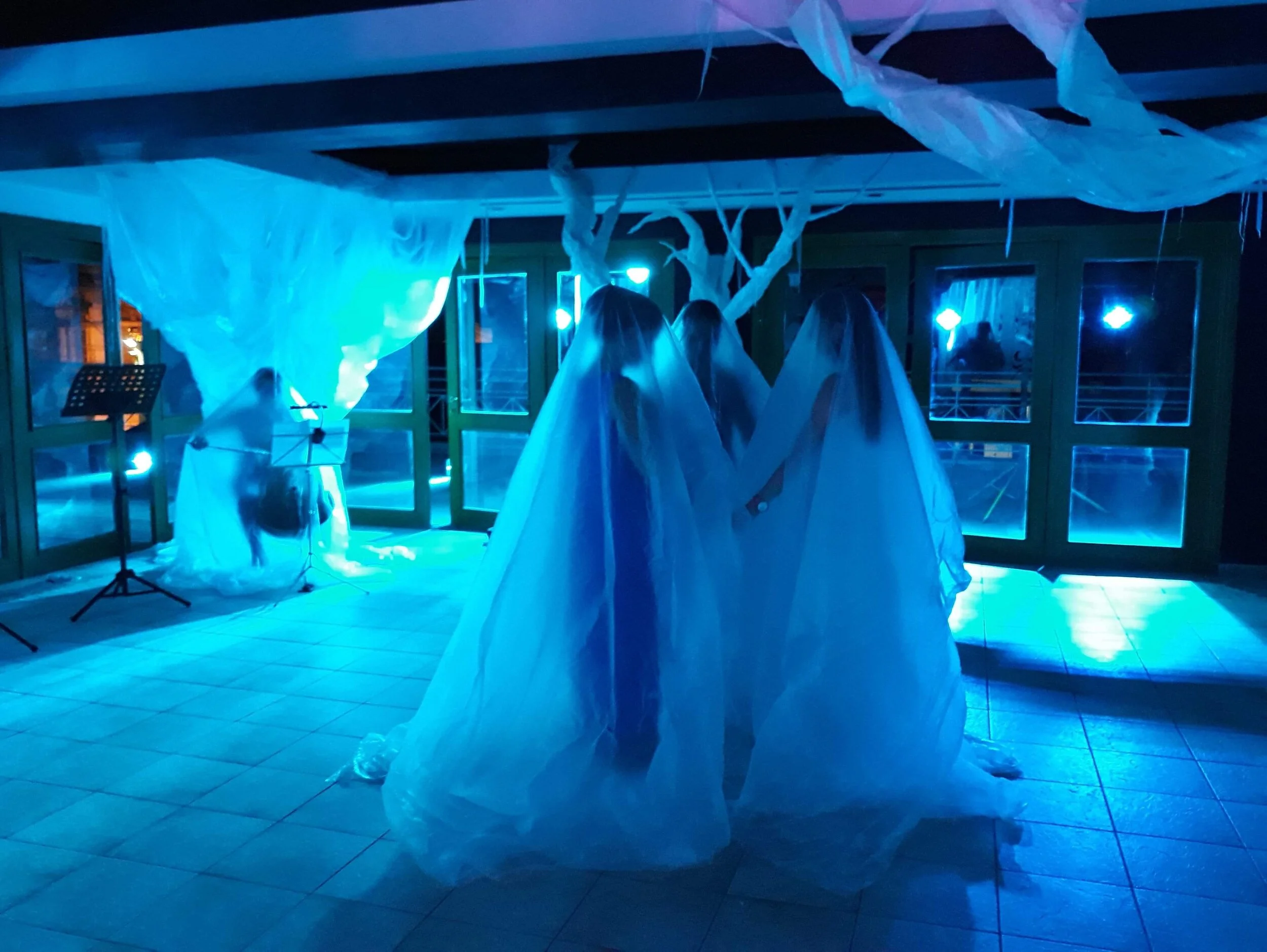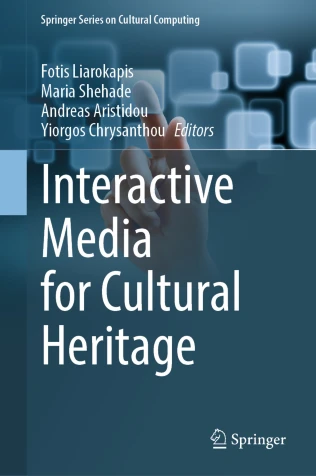REINHERITING CULTURAL HERITAGE SPACES: PERFORMANCE DESIGN AND PRACTICE
Two interdisciplinary immersive performances were organised within the framework of ReInHerit, funded by Horizon 2020 (https://www.reinherit.eu), which is an international project focused on promoting a digital ecosystem connecting cultural heritage collections and sites, in order to present Europe’s tangible and intangible heritage to citizens and tourists in its wider historical and geographical contexts. The immersive performances will provide a template for collaborations for developing similar projects, which are shaped by cultural heritage sites and will in turn help to attract wider audiences to them. These were planned, developed and realised in parallel to the setup of a digital platform, in which all key stakeholders (museums, cultural heritage sites, policy makers, professionals and communities) have an open and collaborative space to experiment, share, co-create and innovate. A diverse group of professionals joined forces to create this project, resulting in two interdisciplinary performances that invited audiences to take initiative in shaping their experience of them. Read full chapter
The Use of the Harp in Experimental Music: The Composition and Performances of Spindle for Harpist and Assisting Performers
Creating new music for the harp, the composer needs to make choices about whether to build on the instrument's cultural baggage, and the strong accompanying imagery, or to attempt to move in the opposite direction. This paper will explore the processes which led to the composition and performance of Spindle for solo harp and assisting performers, discussing elements of theatricality, degrees of audience participation, performer-audience hybrids, verbal instructions in the score, and non-verbal cues during performance. It will also discuss improvisation using loops, and challenging the fourth wall through the physical interaction between performers and audience, and examine similar practices in a selection of pieces composed in the last 70 years.
Read article
Acts of making and receiving: A compositional practice
(Doctoral thesis, Trinity Laban Conservatoire of Music and Dance/City University of London)
A commentary on seven pieces created to explore the idea of music as the social activity of performance – including the rituals around it – instead of as abstract works. The pieces explore the relationship between performers and audience and the effects performance space has on that relationship, by addressing the function of the fourth wall as part of musical performance. Focusing on the inherent theatricality of musical performance, the pieces were created by experimenting with the non-sonic constituents of performance – i.e. the space that hosts performance and the rules that govern it, the distance between performers and audience and their behaviour towards each other. In short, my intention was to challenge performance conventions found in the performing tradition of Classical music by composing new music with an emphasis on the non-sonic constituents of performance. Read full document



